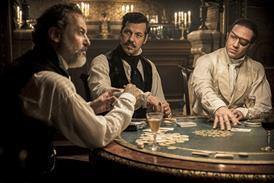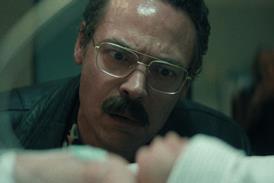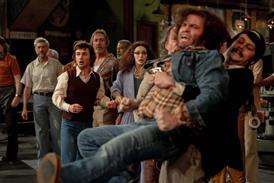Media have been gloating over the failure of John Carter to connect to audiences. But it is not a cause for celebration and will lead to even less tentpole risk-taking.
I was bemused at the unreserved delight with which some US bloggers seemed to report on the disappointing box office opening in North America for Disney’s John Carter. We all like to gloat over a big, ignominious studio flop, but I found the failure of John Carter – albeit more marked in the domestic market than the international – a rather depressing blow for driving through ambitious new concepts in the studio system.
The recriminations were a bit naïve. We all know how some studio movies are like runaway trains: once they are greenlit, they can snowball out of control before reaching the screen. It happens to every studio every year, and they do their best to salvage the problem movies. Sometimes, in the case of Titanic or Avatar, the success of the ensuing film immediately makes us forget the months of bad press running up to the opening. In the case of John Carter, when the film doesn’t deliver the goods or connect with audiences, the presshounds that are already out for blood have a field day. Toldja, as one blogger would say.
I saw John Carter a few weeks ago and was underwhelmed. Bored actually. Having said that, I have found the Pirates Of The Caribbean and Transformers films boring as well, and that didn’t stop them grossing billions at the box office. No, in the case of John Carter, the particular combination of talent, story and positioning in the market just didn’t work with a mass audience – burning Disney in the process, and reminding all the major studios of the dangers of spending too much on a potential new franchise. Spend $250m on the second in the franchise once the audience is hungry for it, but not on an untried first instalment.
Take The Hunger Games, for example. Lionsgate spent about $80m producing this movie, based on the first of a trilogy of books by Suzanne Collins. The books are popular with young adults principally in the US, but also gaining favour throughout the world. They are recent (unlike John Carter which is based on a 95 year old Edgar Rice Burroughs novel), cool and filled with edgy teen characters in dangerous situations.
The mood in the marketplace over The Hunger Games couldn’t be more different than for John Carter. Anticipation is that the independent studio has a blockbuster superhit on its hands, possibly bigger than the first Twilight movie. Tracking and advance ticket sales are huge, and the US and European premieres have been global media events despite the fact that the cast is led by relative unknowns Jennifer Lawrence and Josh Hutcherson.
I was at the European premiere in London on Wednesday night and the sight of hundreds of screaming fans clamouring for a glimpse of Lawrence, Hutcherson or Liam Hemsworth was astonishing bearing in mind that the film doesn’t open anywhere for another week. It’s Pattinson, Stewart and Lautner redux – or Radcliffe, Watson and Grint. There’s a love triangle pattern here.
John Carter – referred to as Ishtar On Mars by The New York Times recently – is not a dreadful film. It’s not cringingly bad like Howard The Duck, Gigli or indeed Ishtar. It’s ambitious, spectacular and keen to entertain but just misses the mark. I’d rather watch John Carter again than have to suffer through a Pirates or Transformers picture a second time.
But in the high risk world of big budget studio movies – where you are only a good movie if your box office gross is gigantic – John Carter is a turkey.
It’s not a cause for celebration, by the way. It probably means more sequels and remakes and even less risk-taking at that budget level. Hopefully The Hunger Games will provide a counterbalance by showing that you can still invest – smartly - in new stories and new characters and still catch fire at the box office.






















No comments yet